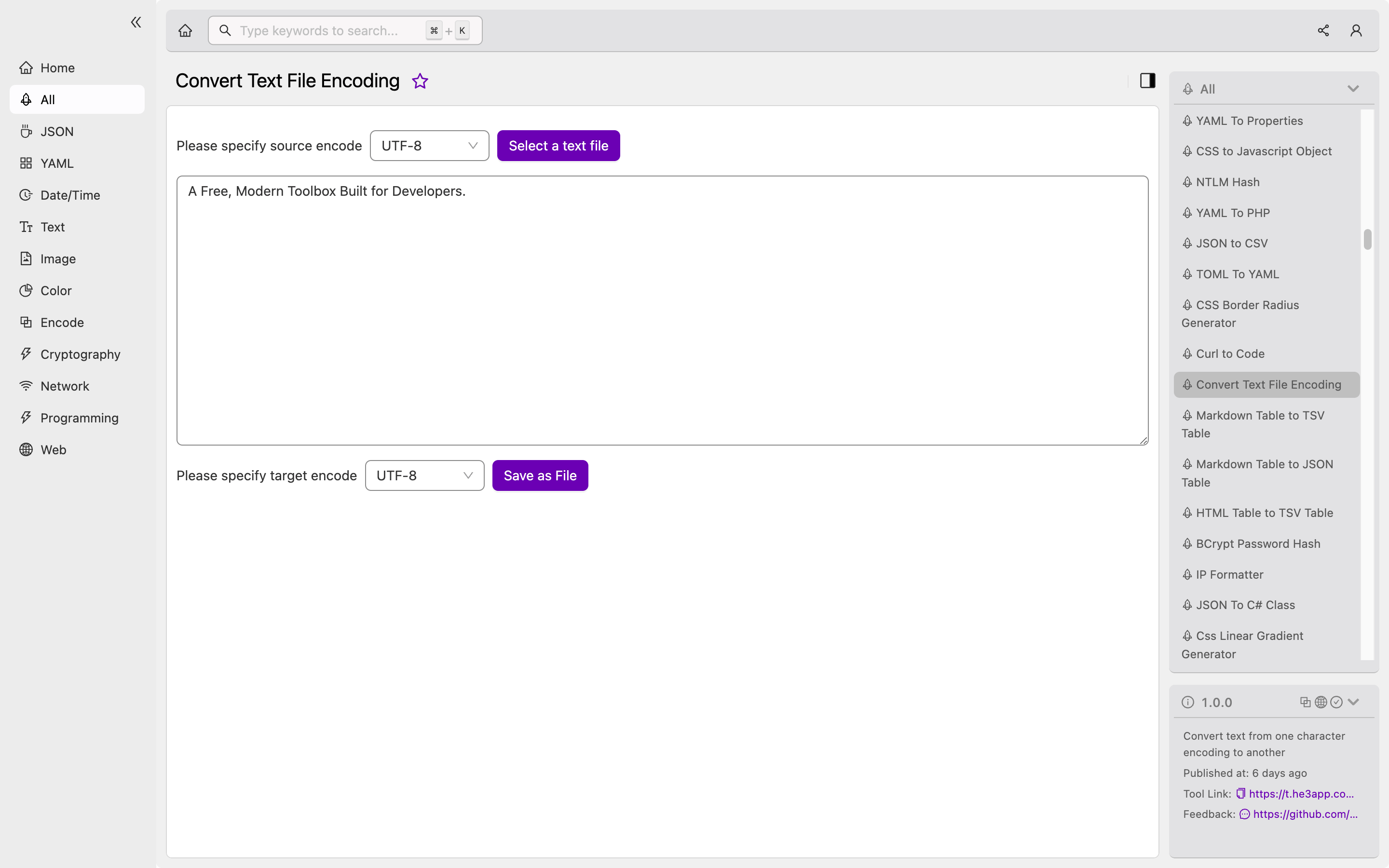Convert Text File Encoding: How it Works and Why Developers Need it
When working with text files, developers often encounter issues with encoding. Different applications and platforms may use various encoding types, leading to unreadable or distorted text. This is where text file encoding conversion comes into play. In this article, we will explain what text file encoding is, how conversion works, and why it’s crucial for developers.
What is Text File Encoding?
Text file encoding is the process of assigning a binary code to each character in a text file, enabling computers to understand and display them correctly. There are several encoding types, such as ASCII, UTF-8, UTF-16, and more. Each encoding type uses a different binary code format and can represent a specific set of characters. The default encoding type used in many applications is ASCII, which can represent only 128 characters.
How Text File Encoding Conversion Works
Text file encoding conversion converts a text file from one encoding type to another. This process involves reading the file’s data, decoding it from the source encoding type, and encoding it to the target encoding type. There are several tools and libraries available to perform encoding conversion, including Notepad++, Sublime Text, Python, and more.
Or you can use Convert Text File Encoding tool in He3 Toolbox (https://t.he3app.com?2llq) easily.

Scenarios for Developers
Developers may encounter several scenarios where text file encoding conversion is necessary. For example:
- Converting a file to UTF-8 or UTF-16 for compatibility with internationalization standards
- Reading a file encoded in a specific format for processing
- Displaying text correctly on different platforms with different encoding types
Key Features
Some common features of text file encoding conversion tools and libraries include:
- Support for multiple encoding types
- Recursive conversion of multiple files in a directory
- Batch conversion of files
- Preserving the original file’s metadata, such as creation and modification dates
Misconceptions and FAQs
Misconception: Text file encoding conversion always results in data loss.
The reality is that text file encoding conversion shouldn’t result in data loss if done correctly. However, if the target encoding type can’t represent some characters in the source encoding type, data loss may occur.
FAQ 1: Can I change the encoding type of an existing text file?
Yes, you can change the encoding type of an existing text file using encoding conversion tools and libraries.
FAQ 2: What’s the difference between ASCII and Unicode encoding types?
ASCII can represent only 128 characters, while Unicode can represent over a million characters. Unicode is also the standard encoding type used in most modern applications and platforms.
Conclusion
Text file encoding is crucial for computers to understand and display text correctly. Text file encoding conversion helps developers ensure compatibility, readability, and consistency when dealing with text files. Converting text file encoding is a relatively easy process, and there are many tools and libraries available to help developers with this task.
References:
